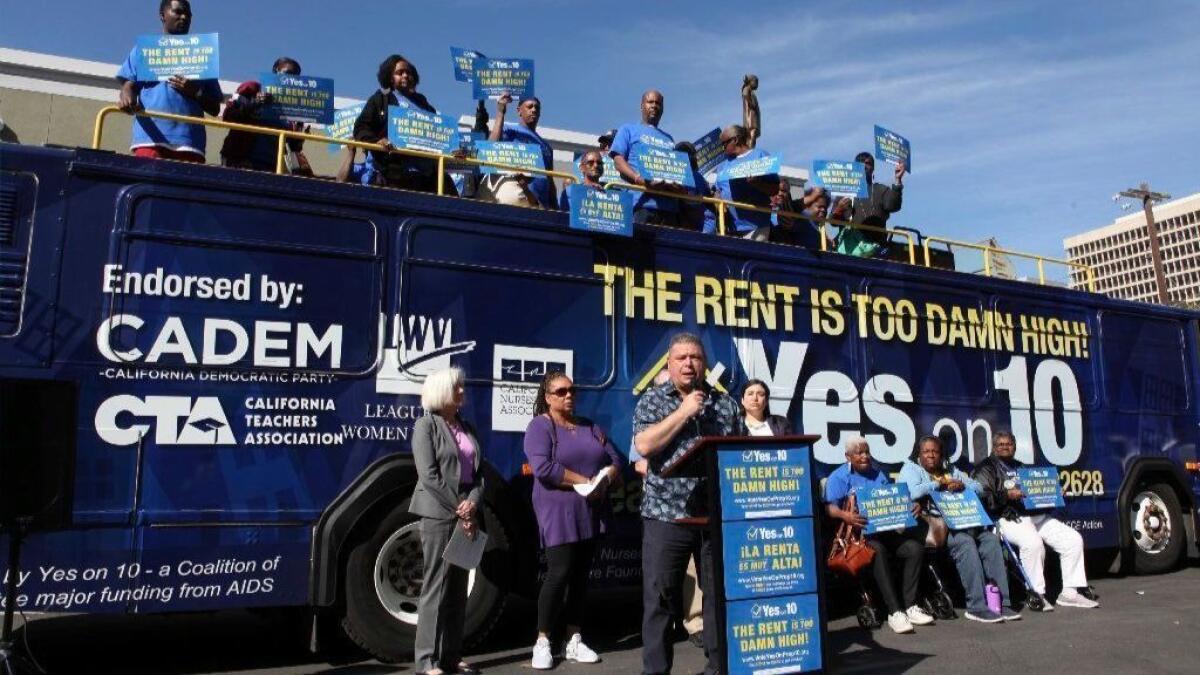Readers React: Rent control invites developers to put their money to better use outside housing

- Share via
To the editor: My USC colleague Gary Painter’s defense of rent control is flawed.
He argues that, if Proposition 10 passes and developers can no longer maximize returns by raising rents, then they may well switch to Plan B and build more units to generate more income. This ignores the reality of Plan C: Move capital out of housing entirely and into a more productive use.
Painter is correct that Richard Arnott is one of the best urban economists of our time, but he does not fully characterize his position on rent control.
Arnott thought economists should not be so staunchly opposed to second-generation controls because data showed in some cases that controls might have only negligible effects. He has never suggested rent controls are likely to improve market performance.
James E. Moore II, Los Angeles
The writer is a professor in USC’s Price School of Public Policy.
..
To the editor: Proposition 10 can be confusing. It does not establish rent controls anywhere.
The Costa-Hawkins Act, which Proposition 10 would repeal, is a state law that takes away the decision-making from local communities on whether or not there should be specific forms of rent regulation on specific types of housing units. In effect, Costa-Hawkins overruled local decisions on rent control. Proposition 10 would leave decision-making on rent regulations in the hands of local communities, where almost all other land use decisions are made.
Proposition 10 is essentially a home rule proposition. A “yes” vote restores local control of key housing decisions. If it passes, it will then be up to local voters to decide what kind of regulations of rents they want, if they want any regulations at all.
They can then consider Painter’s compelling arguments for adopting rent controls to spur more building, and it will be their decision.
Peter Marcuse, Santa Barbara
The writer is a professor emeritus of urban planning at Columbia University.
..
To the editor: Cities can already implement rent-control ordinances. State law only imposes a few restrictions on local jurisdictions: no rent control on houses and condos, no rent control on newer buildings, and all rent control ordinances must allow newly vacant units to increase to market rate.
Costa-Hawkins imposes these limitations so housing maintenance and production can continue despite the price controls and disincentives that rent control imposes on the market.
I may only have a bachelor’s degree in economics, but I do have 33 years of experience working in the multifamily housing industry in Southern California, and I can tell you that Proposition 10 can only further constrain the housing supply, resulting in higher prices and shortages.
The Legislature should pass the other measures Painter suggested to simplify the housing production process. Then we might see some normalization of the market and softening of rents, benefiting all residents.
Daniel Bleiberg, Santa Monica
Follow the Opinion section on Twitter @latimesopinion and Facebook
More to Read
A cure for the common opinion
Get thought-provoking perspectives with our weekly newsletter.
You may occasionally receive promotional content from the Los Angeles Times.









